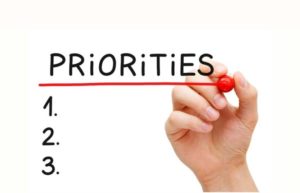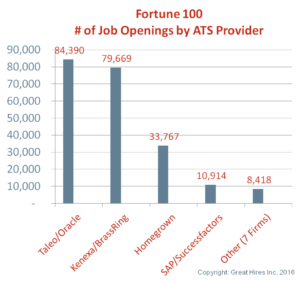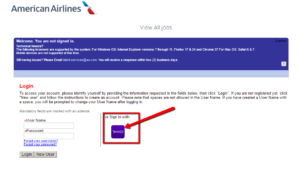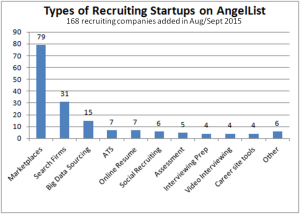In the first two articles of this series we discussed the role of people and process in the success of the candidate experience. Without getting alignment in your organization with these two components first, the tools you choose will have limited impact. The tools you choose for your candidate experience may already be part of the enterprise-wide solutions offered by your company, or point solutions you choose as a recruiter that match your personal best practices.
This article is intended to provide a framework for how to think about the tools you use to enhance your candidate experience. Very simply, we will parse looking at candidate experience tools into three parts:
- Measurement – How are we doing?
- Priorities to improve
- Tools to solve the priorities
Note: Talent Tech Labs produces an excellent quarterly map of the recruiting ecosystem if you are looking for an overview of the key players grouped by segment in the talent acquisition field.

Measurement – How are we doing?
Benchmarking the current state of your candidate experience should be your starting point. To do so, you need to act like a marketer. Not only do you need to listen to your customers, candidates, but you also need to watch and measure their behaviors.
Listening to candidates is relatively simple and can be done qualitatively via follow-up interviews and anecdotal comments and quantitatively with surveys that include standardized measurement techniques like the Net Promoter Score. There are hundreds of vendors who offer a variety of survey tools (e.g. Google Forms, SurveyMonkey, Formstack etc.), the challenge is less about the survey, and more about a) getting it to candidates in a timely and automated way and b) aggregating and analyzing the data. Integrating the survey into your contact management tool with candidates, whether it is as simple as email or the auto-generated messages sent from your ATS is critical to capturing the data you are trying to collect. In addition, spending time figuring out what the data says about your people and process should be driving your priorities to improve.
Thanks to digital technology it is much easier to measure candidate behavior when it comes to talent attraction and the application process. By applying online marketing practices to these stages in your candidate experience, you can quantify exactly how effective your candidate experience is. The recruiting process is very similar to the sales funnel for an online service (e.g. ecommerce site or SAAS solution). Near the top of the funnel, when a candidate comes to your landing page (e.g. the job description), you should be measuring the click-thru-rate to start the application process. From there you can measure abandonment rate at each step of the application and your final conversion rate (completed applications). This is no different than what a marketer would do using Google Adwords to sell a specific product on an ecommerce site. There are a variety of tools to help measure and optimize click-thru rate and conversions. A few well-known vendors in this space include Mixpanel, Optimizely, Qualaroo and KISSMetrics and can be used for both desktop and mobile experiences. At the end of the day, if you are seeing very low application completion rates, it is very clear you have a problem, but at least you now have visibility about where to look to determine the root cause.

Priorities to improve
Now that you have collected both qualitative and quantitative data on your candidate experience, you need to pick the opportunities to focus on first where you can get the biggest bang for your buck. This should not just focus on the talent attraction and application process, but end-to-end, including the other three phases described in the Candidate Experience report: Screening & Dispositioning; Interviewing & Selection; Offer, Onboarding & New Hire.
Tools are meant to solve a problem, so there must be specific problem you want to focus on. Your measurement techniques should identify them. Research shows the most common sources of negative candidates experiences are the following:
- Job details don’t tell the candidate enough information
- Application process is too long or complicated
- “Did you get my application?”
- Poor interaction(s) between candidate and the hiring team
- Speed of decision making
- “Where do I stand?”

Tools to solve the priorities
If you are only using your corporate HR/Talent acquisition tools have made available to you, you probably aren’t winning the battle for talent. Whether you are using an old-school, clunky enterprise ATS or one of the new-wave of recruiter-friendly solutions, it is very unlikely your ATS offers a complete set of features needed to solve your high priority candidate experience problems. This creates the natural tension of using your integrated ATS solution vs. point solutions which would typically require double-entry of information and aggregating multiple sources of data for analysis. Unfortunately, this is the reality of recruiting tools in 2015, but a little extra effort on your point can differentiate both your candidate experience and yourself as a recruiter.
Now let’s review the tools to solve the most common candidate experience gripes:
- Job details don’t tell the candidate enough information
This can be solved by both making the information easy to find and consume by making your job details . In addition to providing additional information about the job or company which can include videos and other types of rich media. There are a variety of ATS and point solution companies that can help with employer branding, job distribution and mobile recruiting (e.g. CEB, Jibe, Smashfly).
- Application process is too long or complicated
We previously discussed optimizing the application process to only focus on value-added activities when applying. The challenge is usually in the lack of flexibility of your online application form tool or a “corporate recruiting tax” that requires all applicants to supply information that really isn’t needed at this stage of the process. Take the time to figure out which steps/fields truly add value to the application and update your tools accordingly.
- “Did you get my application?”
This is really about people and process and making sure your ATS (or whatever tool you use to manage your applicant database) has the ability to respond automatically to a submission, but also provides additional information about the full hiring process, the company and what to expect next. This is pretty standard stuff and should be considered table-stakes for your application management tool.
- Poor interaction(s) between candidate and the hiring team
Depending on the types of challenges you find, it can be anything from interviewers showing up late, poorly prepared interviewers who don’t know enough about the job or candidate, or ask poor questions during the interview. Beyond email and embedding calendar event with pdfs and blue links, there are various interviewing tools already available in your ATS and there are others that can help with scheduling and interview guides. Another source of a bad candidate experience are hiring team member who basically exhibit behaviors the lead the candidate to believe that they just don’t care – this is a people problem that no tool can solve.
- Speed of decision making
The data you collect about your complete candidate experience should reveal the causes of delay in decision making. A couple of the more common sources of slow decision making are firstly, slow compiling of interview feedback from the hiring team. Typically, less than 30% of interviewers submit digital feedback whether by email or completing a standardized form. Mobile friendly feedback forms and automated nag reminders from your interview management tool are simple ways to accelerate decisions and reduce time-to-offer. Secondly, delays can be caused by the natural timing challenges that occur when you have multiple good candidates in parallel processes with but one candidate is a week or two ahead of a second. The first candidate typically does not enjoy stewing while they wait on you to figure out if you like the other candidate more than them. A specific tool likely won’t help solve this challenge, rather your people and process should kick in. Engaging with the candidate that is on hold to give help with transparency and also to make sure you keep you in synch should they may move on to another opportunity while you play the waiting game.
- “Where do I stand?”
Having a good candidate relationship management tool to track exactly the status of each candidate is the only way to make sure they are getting a personalized experience. In an ideal world your ATS would be make this super-easy. However you may need to find a point solution of your own if your specific candidate management needs aren’t being met. Instead you may consider more generic CRM tools like Salesforce, Sugar CRM, Zoho or Avature. These tools tend to be easier to use and you can configure the various fields and notifications to match your own recruiting practices.
There are literally hundreds of tools available to help you with your candidate experience. Some designed specifically for recruiting, others designed for sales or marketing that can be applied to your process. What matters most is that they solve a high priority need and give you bang for your buck. Given the many self-service solutions now available, trying them out for 30 or 60 days will give you enough data to see if they are worth your investment of time and energy.
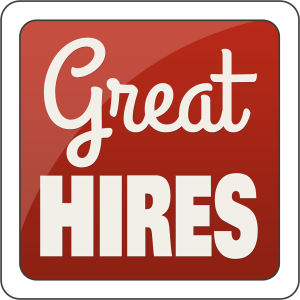
____________________________________________
About the Author: Ray Tenenbaum is the founder of Great Hires, a recruiting technology startup offering a mobile-first Candidate Interviewing Experience platform for both candidates and hiring teams. Great Hires was named as one of Entrepreneur Magazine’s Brilliant Companies of 2016 where it was ranked #2 in Business Tools. Follow Ray on Twitter @rayten or connect with him on LinkedIn.


